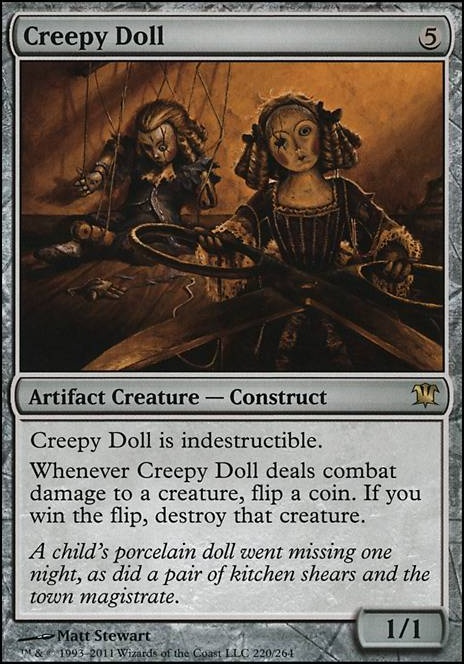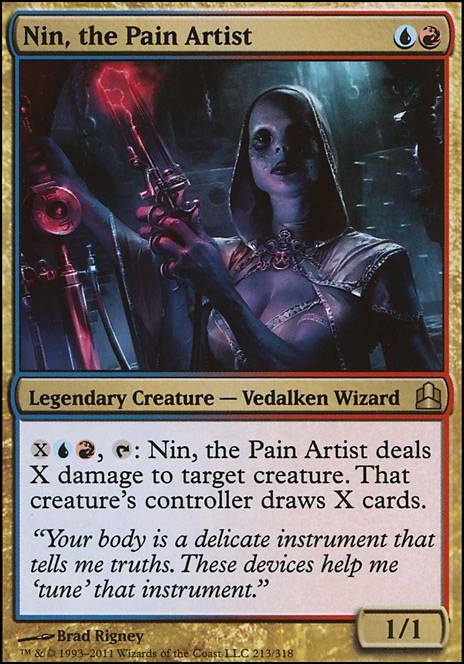Land (39)
-
1x
Cascade Bluffs

- 1x Castle Vantress
- 1x Command Tower
- 1x Desert of the Fervent
- 1x Desert of the Mindful
- 1x Exotic Orchard
- 1x Field of the Dead
- 1x Forbidden Orchard
- 1x Glasspool Shore Flip
- 1x Hall of Storm Giants
- 6x Island
- 1x Izzet Boilerworks
- 1x Jwari Ruins Flip
- 1x Kher Keep
- 1x Mikokoro, Center of the Sea
- 2x Mountain
- 1x Myriad Landscape
- 1x Prismari Campus
- 1x Reflecting Pool
- 1x Reliquary Tower
- 1x Riptide Laboratory
- 1x Scavenger Grounds
- 1x Silundi Isle Flip
- 1x Sokenzan, Crucible of Defiance
- 1x Song-Mad Ruins Flip
- 1x Springjack Pasture
- 1x Steam Vents
- 1x Stormcarved Coast
- 1x Sulfur Falls
- 1x Surtland Frostpyre
- 1x Training Center
- 1x Valakut Stoneforge Flip
- 1x Wandering Fumarole
Enchantment (3)
Instant (29)
- 1x AEtherize
- 1x Arcane Denial
- 1x Blue Sun's Zenith
- 1x Chaos Warp
- 1x Comet Storm
- 1x Commander's Insight
- 1x Counterflux
- 1x Counterspell
- 1x Cryptic Command
- 1x Cyclonic Rift
- 1x Disallow
- 1x Discontinuity
- 1x Diviner's Portent
- 1x Evacuation
- 1x Expansion / Explosion
- 1x Force of Will
- 1x Invoke Calamity
- 1x Mana Drain
- 1x Mindbreak Trap
- 1x Mystic Confluence
- 1x Pact of Negation
- 1x Perplexing Test
- 1x Rapid Hybridization
- 1x Reality Shift
- 1x Sublime Epiphany
- 1x Summary Dismissal
- 1x Time Stop
- 1x Void Shatter
- 1x Wash Away
Sorcery (5)
Commander (1)
Creature (14)
- 1x Archaeomancer
- 1x Brash Taunter
- 1x Burnished Hart
- 1x Creepy Doll
- 1x Deekah, Fractal Theorist
- 1x Dualcaster Mage
- 1x Hullbreaker Horror
- 1x Jiwari, the Earth Aflame
- 1x Overcharged Amalgam
- 1x Snapcaster Mage
- 1x Solemn Simulacrum
- 1x Spellseeker
- 1x The Locust God
- 1x Venser, Shaper Savant
Artifact (7)
- 1x Bonder's Ornament
- 1x Chromatic Lantern
- 1x Cursed Mirror
- 1x Geometric Nexus
- 1x Honored Heirloom
- 1x Magnifying Glass
- 1x Skyclave Relic
Planeswalker (2)
Suggestions
Updates Add
Comments
Attention! Complete Comment Tutorial! This annoying message will go away once you do!
Important! Formatting tips — Comment Tutorial — markdown syntax
Please login to comment
| Date added | 6 years |
| Last updated | 2 years |
| Legality | This deck is Commander / EDH legal. |
| Rarity (main - side) | 8 - 0 Mythic Rares 61 - 0 Rares 14 - 0 Uncommons 9 - 0 Commons |
| Cards | 100 |
| Avg. CMC | 3.98 |
| Tokens | Boar 2/2 G, Clue, Construct */* C, Copy Clone, Emblem Chandra, Awakened Inferno, Fractal 0/0 GU, Frog Lizard 3/3 G, Goat 0/1 W, Insect 1/1 UR, Kobolds of Kher Keep 0/1 R, Manifest 2/2 C, Shark */* U, Spirit 1/1 C, Zombie 2/2 B |
| Votes | |
| Ignored suggestions | |
| Shared with | |
| Views |


